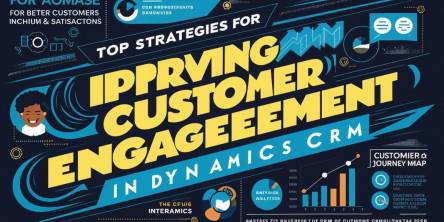UFT Test Automation Frameworks: What You Need to Know

As the importance of software continues to grow, there are several factors whose influence have grown right along with it. And out of all of them, test automation frameworks have garnered their fair share of attention from the market. Why is that? It is because these frameworks serve as an implementation guideline for automation testing. Among other things, it enables the team to reuse code in different scenarios, put together a testing script in a standard format, etc. As a result, it can empower automation testing teams to deal with challenges without much of a fuss.
Also referred to as micro focus unified functional testing, certain parameters must be met when it comes to automation frameworks. Listed below are some of the most crucial requirements for a standard automation framework.
- Parameterization of data
- Code must be compulsorily comprehensible, easily maintained, and reusable for varying sets of data
- Test data must not be mixed with the code
- Results achieved from the test must be recorded in individual log files and in an easy to comprehend format
- Processes for taking care of errors in an appropriate manner should also be a part of the framework
- The framework must ensure continuity even in case of failure of a test case
Now that we have understood what makes a robust automation framework, let us now look at the different types of structures one can use for automation testing.
- Data-driven framework: In this framework, input parameters, instead of being coded in the test case, are channeled via external mediums.
Pros:
- It allows a single test to be run with several sets of data
- Execution is accelerated, thus helping save time
Cons:
- Necessitates extensive technical expertise to determine external sources of data and establish connections
- Business process testing framework: With the automated business process testing framework, one gains the ability to organize test cases based on different criteria and scenarios.
Pros:
- Users can quickly build test case scripts with business process components
- Comes loaded with a plethora of in-built features, including data parameterization, component linking, and more
Cons:
- You need the HP Quality Centre Tool
- High licensing costs for HP Quality Centre Tool
- Functional decomposition framework: Under the purview of the operational decomposition automation testing framework, software testing professionals must first find the reusable code that needs automation. After that, these testers must then write the reusable code in different functions that can be called based on the software’s testing needs.
Pros:
- The process of writing test case scripts is quicker since reusable functions have to be built just one time
- In case of any modifications to the app, changes have to be made only in one place
Cons:
- Because data is hardcoded into the test scripts, one is unable to execute these scripts with different sets of data
- Additional time is needed to find reusable test cases successfully
- At least necessary programming skills are a must to build and maintain reusable functions, etc
- Hybrid framework: As the name suggests, this type of structure is built with a handful of different automation testing frameworks, such as the ones mentioned above. Remember that you will need at least two distinct frameworks to create a hybrid structure, of course.
Pros:
- It offers the opportunity to make use of the best features and functionalities of several different automation testing frameworks
- If planned and executed strategically, hybrid frameworks can prove to be highly agile and sturdy
Cons:
- To build and use a hybrid framework, one needs extensive technical expertise.
This much is abundantly clear — automation testing has a vital role to play when it comes to the development of robust software. So, for the process to be able to deliver high-quality results as desired, one must take the time to carefully evaluate and then select the framework best suited to their project’s unique requirements.
Similar Articles
Among the solutions developed over the past few decades, Salesforce Financial Services Cloud (FSC) has emerged as the definitive choice for gaining flexibility, visibility, and long-lasting, inclusive growth in the financial sector.
Open source software (OSS) is distributed with its source code, which means it can be distributed, modified, and used freely with the original rights. Most users never see the source code, a critical part of the software.
It's one of the keystones, basic but key in the successful highly competitive modern business environment, where the connection with the customer is a must.
The speed of progress in the modern business landscape is quite relentless. For small-scale companies, this implies that keeping up with this progress is not simply gainful but fundamentally significant for their survival. And what does success in such an environment demand?
The finance sector needs to battle many difficulties in the modern and quick-moving digital landscape. Be it exploring the unpredictable snare of official guidelines or overseeing tremendous volumes of data - - financial establishments are feeling the pressure to succeed. This demanding environment, in turn, often leads to exhausted teams, costly manual errors, and inefficiencies that can be chalked up to repetitive tasks
The manufacturing industry, vital to the world economy, is at a pivotal intersection. I mean that, yet again, changes are afoot in the sector, this time driven by digital transformation as it represents a profound change in the very essence of how manufacturers operate, think, and drive innovation.
Technology helps make things easier and faster. Digitization is one of the aspects of technology that has changed how we live and work. It has brought many benefits for businesses, especially the travel industry. Customers can search online for the schemes offered and easily book trips, but payments need to be completed with ease.
In an article published by The Economist in 2017, while describing the astounding growth of titan companies like Google, Apple, Facebook, and Microsoft, it was mentioned how data had become “the oil of the digital era.”
Harnessing the latest technology to create and distribute content is an ongoing process in the media and entertainment industry. Changes in consumer behavior and demands, along with continuous and rapid technological advancements, are reshaping the industry









